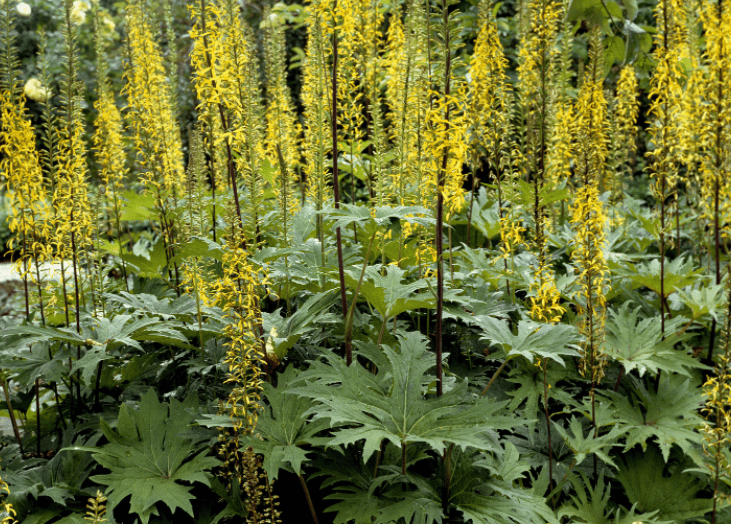Ligularia Plant Growing Tips
What exactly is Ligularia? The Ligularia genus has 150 species. The majority of them have attractive ornamental foliage and, on rare occasions, blooms. In Europe and Asia, they thrive in regions near water.
Ligularia thrives on wet, marshy soils, although they can even thrive in dry areas if given enough water. Ligularia are members of the Aster family and are also known as ragwort flowers.
Learn how to develop a rich, lush garden of beautiful green leaves in hard-to-plant shady locations by learning how to care for Ligularia.
Ligularia Information
Ligularias are bold, colorful, and striking with their decorative leaves and bright yellow or orange blossoms. These gorgeous summer-blooming perennials are undemanding and often pest-free when appropriately positioned, despite not being suited to hot, dry, open landscapes.
Ligularia are native to China and Japan, and its scientific name comes from the Latin word for the strap, ligula, about the flowers’ strap-like ray florets.
Ligularia, also known as rayflower, ragwort, and golden groundsel, are becoming increasingly popular in gardens looking for “big impact” plants with beautiful foliage.
Description
Ligularia stenocephala The Rocket is one of the most popular ligularias in gardens, and it’s easy to see why. Large clumps of sharply serrated, triangular leaves and tall, bright yellow flower spikes with contrasting black stalks distinguish this noteworthy perennial.
It has the potential to grow to a height of 1.5 meters. Tall yellow flower spikes rise above finely serrated and lobed dark green leaves on purple-black stems in Ligularia Przewalski.
Ligularia dentata Othello’s leaves emerge a deep mahogany red in the spring, fading to dark purple as they mature. The serrated, big heart-shaped leaves are carried on tall stems.
Round clusters of yellow-orange daisy-like flowers with ray florets around a dark brown disk rise considerably above the glossy foliage.
Othello has a companion, Desdemona, who is shockingly similar in look and will grow to 1.2 m with a comparable spread. Another purple-leaved cultivar is Moorblut. Ligularia hodgsonii is a smaller version of Ligularia dentata.
Gregynog Ligularia Gold is a hybrid of Ligularia dentata and Ligularia veitchiana with round, toothed foliage and bright orange-yellow conical flower clusters. This stunning plant can reach a height of 1.8 meters and a width of 2 meters.
Growing Suggestions
Ligularias prefer fertile, high-organic-matter soil. While some gardeners believe that ligularias grow well in full sun as long as the soil is maintained moist, adequate watering is rarely enough to keep the huge leaves from wilting in the afternoon light.
While the wilted leaves will recover once the sun has gone down, prevent the problem by placing them in dappled or light shade. A thick layer of organic mulch surrounding the plant will keep the roots cool, conserve moisture, and enrich the soil with nutrients.
If slugs present a problem in your yard, keep an eye on the leaves of all ligularias or use your favorite slug repellent in the vicinity of the plant.
Ligularias do not require regular division. However, they can be split or moved in the spring if desired. All ligularia species can be reproduced from seed, including purple-leafed varieties.
Tips for Landscaping
Ligularia can be used as a dramatic feature plant in forest gardens or near the back of partially shaded perennial borders. This water-loving plant thrives in low-lying places and near pond edges.
While the plants will develop slowly, they will ultimately become enormous, so make sure there is enough room for them to thrive. Because ligularias, like most large-leaved plants, ligularias are easily damaged by hail, a sheltered area is preferred.
Plants that thrive in wet soil and light shade, especially those with delicate or airy foliage and blossoms that contrast with the huge, solid-looking leaves, are suitable partners for Ligularia.
Astilbe, meadow rue (Thalictrum aquilegifolium), ferns, spiderwort (Tradescantia hybrids), ‘Flore Pleno’ meadowsweet (Filipendula ulmaria), and goose-necked Lysimachia (Lysimachia clethroides) are also excellent choices.























